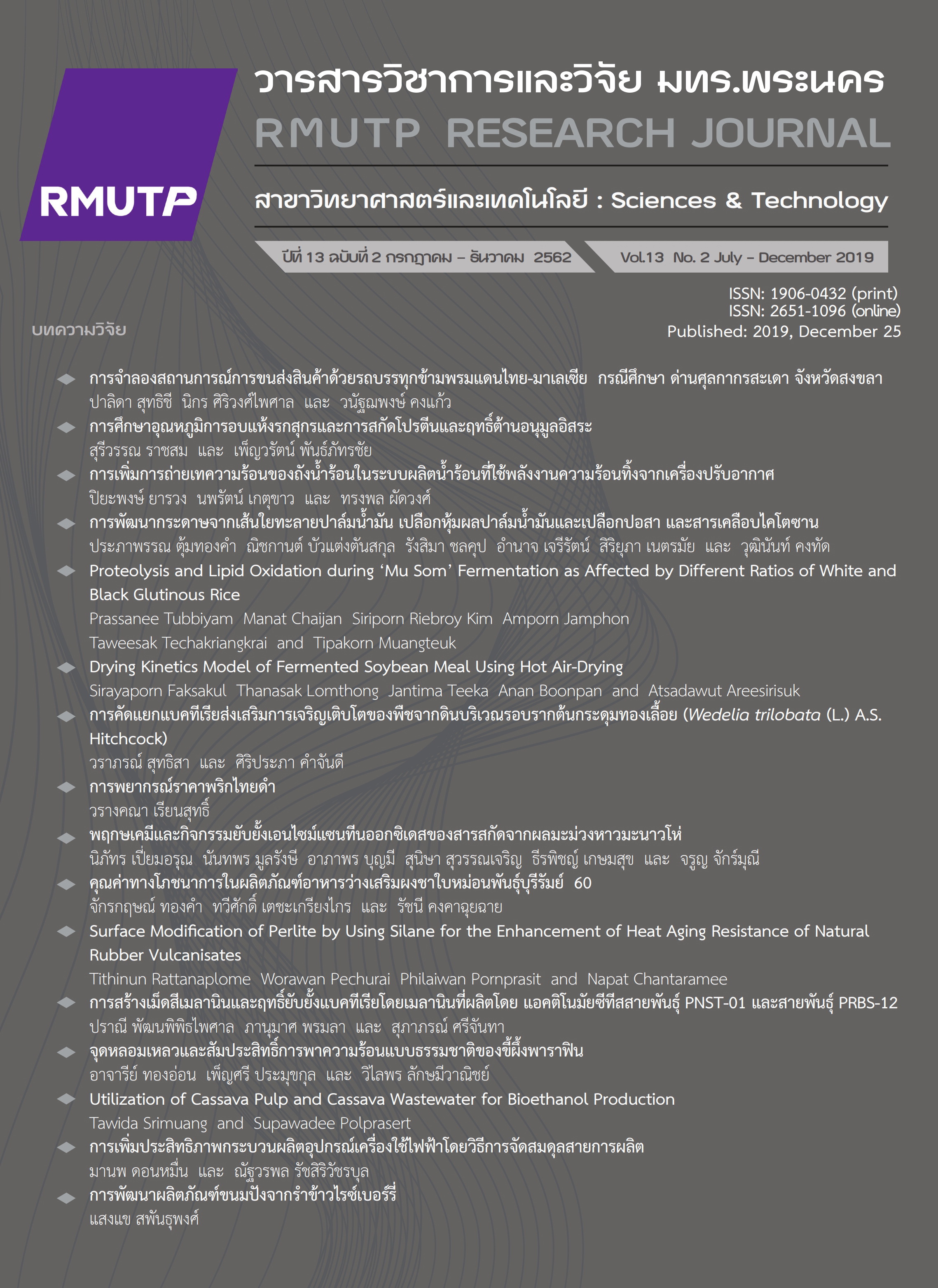Utilization of Cassava Pulp and Cassava Wastewater for Bioethanol Production
Main Article Content
Abstract
The purpose of this study was to optimize the bioethanol production from cassava pulp and cassava wastewater. The study was divided into two phase: 1.) Pretreatment and enzymatic hydrolysis 2.) Bioethanol fermentation. The effect of substrate and ratio of loading 1, 3, 5, and 7% (w/v) with the mixed enzyme ratio of 1:1 (v/v). The results showed that at 7% substrate loading, the highest reducing sugar concentration of 89.55±1.13 g/L. Regarding, the optimal ratio of α-amylase and glucoamylase at 1:1 (v/v) with fermentation time of 4 h gave the highest yield of 0.58±0.02 (g product/g substrate). In addition, the highest glucose yield of 0.36±0.04 (g product/g substrate) was observed in 2 h fermentation time after hydrolysis with α-amylase and glucoamylase, using cellulase and xylanase ratio of 1:1 (v/v). The results indicated that usage of mixed enzyme proved to spend shorter hydrolysis time and enhance the fermentable sugar production from cassava waste. The enzymatic hydrolysate was used as substrate for bioethanol fermentation, using S.cerevisiaeTISTR5339. The results showed that the ethanol yield at fermentation time at 6 h with S.cerevisiae5, 10, 20 and 30% (v/v) were 0.27±0.027, 0.23±0.002, 0.19±0.022 and 0.16±0.011 (g ethanol/g substrate), respectively. The result indicated that ethanol yield decreased with increasing cell concentration of S.cerevisiaeTISTR5339 from 5% (v/v) to 30% (v/v), 5, 10, 20 and 30% (v/v) was significantly higher than substrate without yeast (p<0.05).


